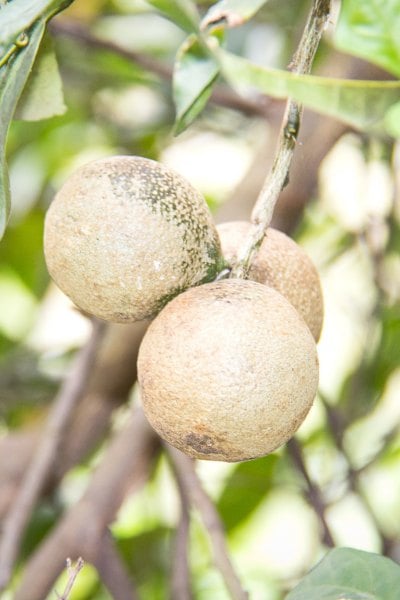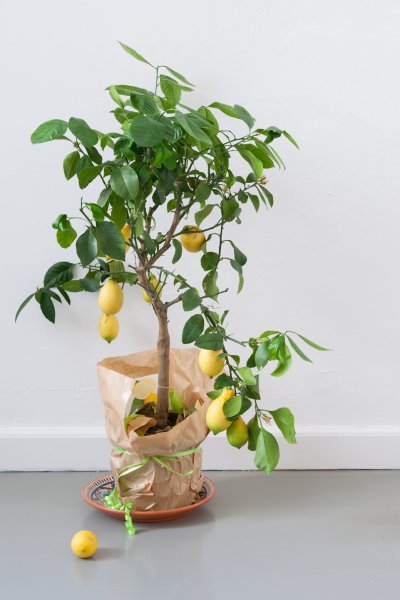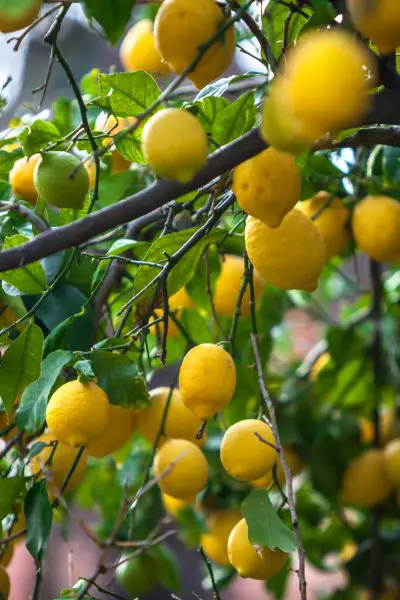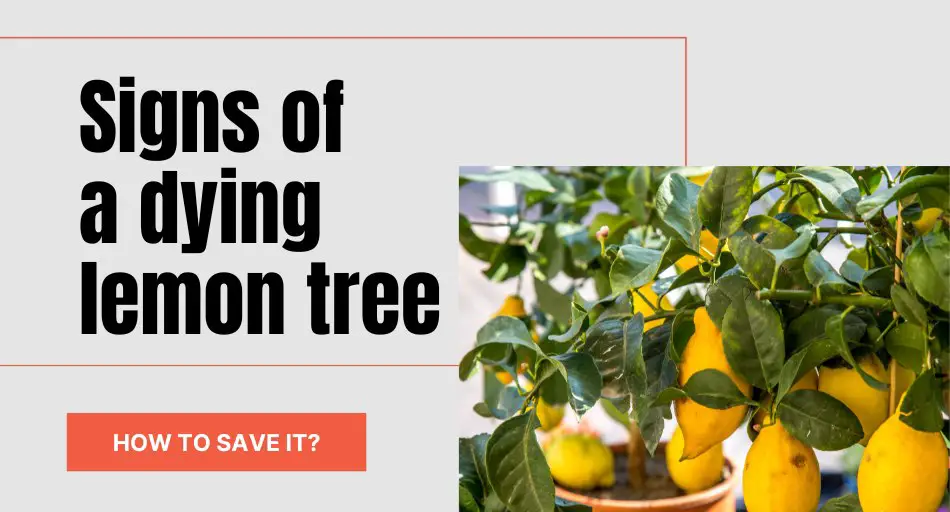If you have a lemon tree in your garden, you know how rewarding it can be to grow your own citrus fruit.
However, lemon trees require proper care and attention to thrive. If you notice that your lemon tree is not looking as healthy as it once did, it may be a sign that it is dying.
In this article, we will discuss the signs of a dying lemon tree and what you can do to save it.
One of the most common signs of a dying lemon tree is a lack of fruit production. If your lemon tree is not producing flowers or fruit, it may be a sign that it is struggling to survive.
Additionally, if the bark of your lemon tree is cracking or the leaves are dropping or dying, it may be another sign that your tree is not healthy.
These symptoms can be caused by a variety of factors, including pests, disease, or environmental stress.
If you suspect that your lemon tree is dying, it is important to take action as soon as possible. With proper care and attention, you may be able to revive your tree and restore it to good health.
In the following sections, we will discuss some common causes of lemon tree decline and what you can do to save your tree.
How Do You Save a Dying Lemon Tree?

Saving a dying lemon tree requires a combination of proper care, identifying the underlying cause of the problem, and taking the necessary steps to address it.
Here are some steps you can take to help revive your lemon tree:
1. Identify the problem
The first step in saving a dying lemon tree is to identify the problem. Some common causes of a dying lemon tree include overwatering, slow-draining soils, lack of sunlight, pests, and diseases.
Check the soil moisture level, inspect the leaves for signs of pests or diseases, and ensure that your lemon tree is getting enough sunlight.
READ ALSO: Grow Garlic Indoors: Choosing the Right Variety
2. Adjust watering
Overwatering is a common problem that can cause root rot and kill a lemon tree. Ensure your lemon tree is not sitting in standing water, and adjust your watering schedule accordingly.
Water your lemon tree deeply once a week during the growing season, and reduce watering during the dormant season.
3. Improve soil drainage
Lemon trees require well-draining soil to thrive. If your lemon tree is planted in heavy clay soil, consider amending the soil with organic matter or planting it in a raised bed.
Avoid planting your lemon tree in pots without drainage holes, as this can cause water to pool around the roots and suffocate the plant.
READ ALSO: Do Fertilizer Spikes Work? (Interesting)
4. Provide adequate sunlight
Lemon trees require full sunlight to produce fruit. If your lemon tree is not getting enough sunlight, consider moving it to a sunnier location or supplementing its light with grow lights.
5. Address pests and diseases
Pests and diseases can weaken a lemon tree and make it more susceptible to other problems. Inspect your lemon tree regularly for signs of pests or diseases, and take the necessary steps to address them.
This may include using insecticides or fungicides, pruning affected branches, or removing infected fruit.
By taking these steps, you can help save your dying lemon tree and restore it to health. Remember to be patient, as it may take some time for your lemon tree to recover.
Why Are My Lemon Tree Leaves Turning Yellow and Drooping?

If you notice your lemon tree’s leaves turning yellow and drooping, it could be a sign that your tree is in distress. There are several reasons why this might be happening, including:
Overwatering
Overwatering your lemon tree can cause the roots to become waterlogged, leading to stress and yellowing leaves. Make sure to water your lemon tree only when the soil is dry to the touch, and avoid letting it sit in standing water.
READ ALSO: 50 Farming Tips for Beginners (Must Read)
Nutrient Deficiencies
Lemon trees require certain nutrients to thrive, including nitrogen, phosphorus, potassium, and iron. A lack of these nutrients can cause yellowing leaves and other signs of distress.
Consider fertilizing your lemon tree with a balanced fertilizer to ensure it’s getting the nutrients it needs.
Pests and Diseases
Pests like spider mites and diseases like greasy spots can also cause yellowing leaves and other symptoms in lemon trees.
Keep an eye out for any signs of infestation or disease, and treat them promptly to prevent further damage.
Environmental Stress
Lemon trees are sensitive to changes in their environment, and extreme temperatures, low light, and other stressors can cause yellowing leaves and other signs of distress.
Make sure your lemon tree is planted in a suitable location with plenty of sunlight and protection from extreme temperatures.
By addressing the underlying cause of your lemon tree’s yellowing leaves and drooping branches, you can help bring it back to health and ensure it continues to thrive for years to come.
READ ALSO: Maximizing Your Snap Pea Harvest: The Benefits of Trellising
What Nutrients Does a Lemon Tree Need?

If you want your lemon tree to thrive, it needs the right balance of nutrients. Here are the essential nutrients that a lemon tree needs:
1. Nitrogen
Nitrogen is essential for the growth of leaves and stems. Without enough nitrogen, your lemon tree may have stunted growth and yellowing leaves.
The best approach here is to add nitrogen to the soil by using a high-nitrogen fertilizer or by adding compost to the soil.
2. Phosphorus
Phosphorus is essential for root growth and flower development. Without enough phosphorus, your lemon tree may have weak roots and produce fewer flowers.
You can add phosphorus to the soil by using a fertilizer that has a higher middle number (such as 5-10-5).
READ ALSO: Will Sugar Snap Peas Grow In Summer? (Here’s What You Need to Know)
3. Potassium
Potassium is essential for fruit development and overall plant health. Without enough potassium, your lemon tree may produce small or underdeveloped fruit.
To fix this you can add potassium to the soil by using a fertilizer that has a higher last number (such as 5-10-15).
4. Calcium
Calcium is essential for strong cell walls and overall plant health. Without enough calcium, your lemon tree may have stunted growth and be more susceptible to disease.
You can add calcium to the soil by using a fertilizer that contains calcium or by adding lime to the soil.
5. Magnesium
Magnesium is essential for the production of chlorophyll, which is necessary for photosynthesis. Without enough magnesium, your lemon tree may have yellowing leaves and stunted growth.
A good approach would be to add magnesium to the soil by using a fertilizer that contains magnesium or by adding Epsom salt to the soil.
6. Iron
Iron is essential for the production of chlorophyll and overall plant health. Without enough iron, your lemon tree may have yellowing leaves and stunted growth.
You can add iron to the soil by using a fertilizer that contains iron or by adding iron sulfate to the soil.
By providing your lemon tree with the right balance of nutrients, you can help it grow strong and healthy. Keep in mind that too much of any nutrient can be harmful to your lemon tree, so always follow the instructions on the fertilizer package.
Frequently Asked Questions
Where is the best place to plant a lemon tree?
The best place to plant a lemon tree is in a sunny location with well-draining soil.
Lemon trees require plenty of sunlight to produce healthy fruit, so it’s important to choose a location that receives at least 6-8 hours of direct sunlight each day.
It’s also important to choose a location that is protected from strong winds, which can damage the tree and reduce fruit production.
How can I revive a lemon tree with no leaves?
Reviving a lemon tree with no leaves can be a challenge, but it’s not impossible. Start by removing any dead or diseased branches and providing the tree with the nutrients it needs to grow.
You may also need to adjust the tree’s watering schedule and provide it with additional sunlight.
What are some common problems with lemon trees?
Common problems with lemon trees include pests, disease, nutrient deficiencies, and overwatering.
It’s important to identify the cause of the problem so that you can take the appropriate action to save your lemon tree.

Jack is the owner, chief editor, and senior writer of this website.
Machinery, engines, and farming have always been a passion of his since he was a young boy. Growing up on a small farm in rural America, he learned the value of hard work and dedication from an early age.
After completing his degree in Engineering, he decided to follow his dream and became a farmer in 2009.
Since then, he has gained a wealth of knowledge and experience in the field. He has grown a variety of crops, tended to farm animals, and worked with all sorts of farming machinery. Continue reading…






